Complimentary worldwide shipping on orders over $400 · No import tariffs for most countries
Complimentary worldwide shipping on orders over $400 · No import tariffs for most countries
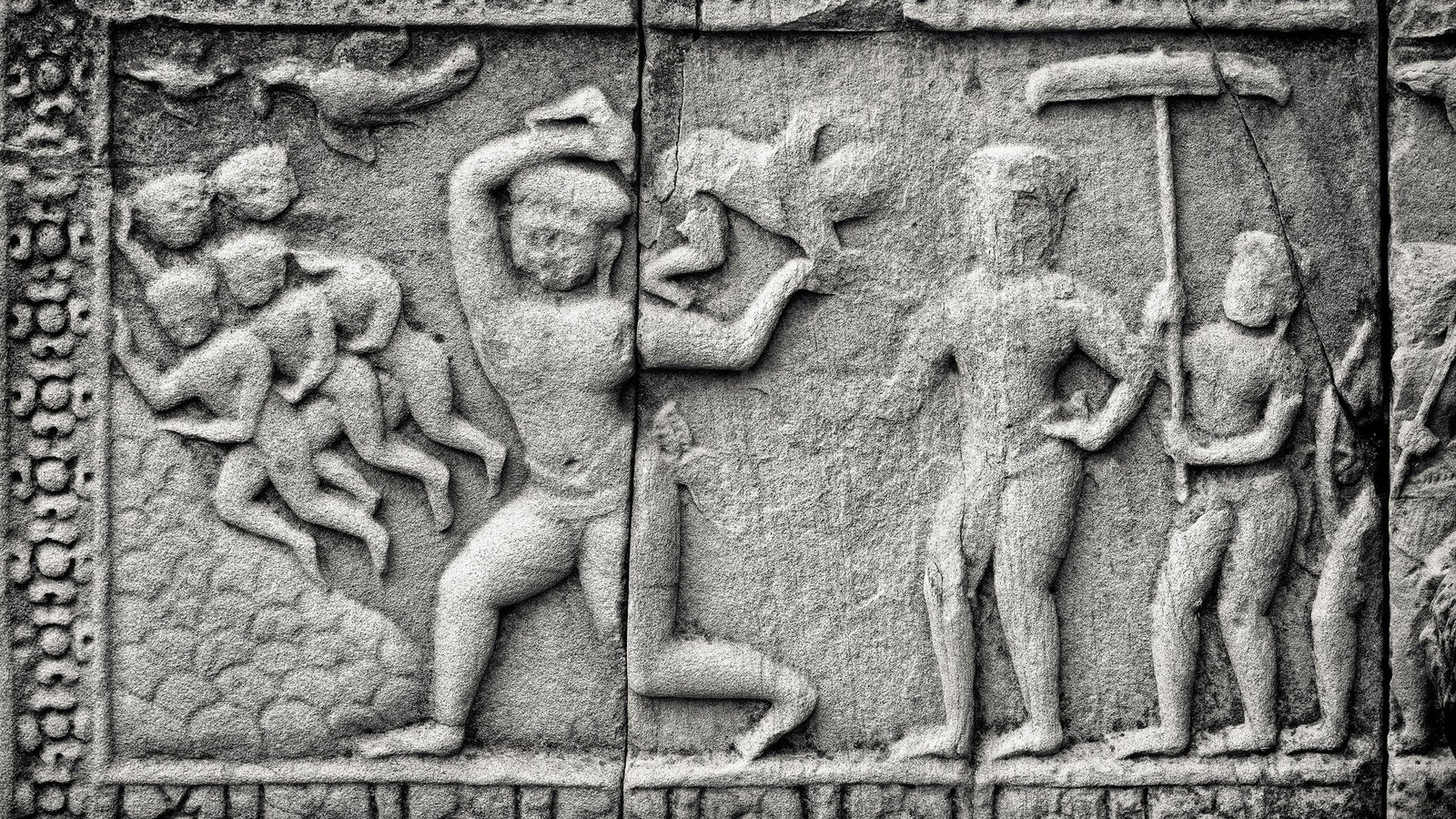
The God Who Was Nearly Broken
3 min read
Sanctuary of Meaning · Journal Article
The dark one was born,
and the earth trembled—not from fear,
but from hope long buried.
—from a field note, Baphuon Temple
—
We walked slowly through the southern gopura of Baphuon this morning, past doorframes worn soft as river stones and lintels draped in the hush of vines. The second enclosure holds a quiet tumult—narrative reliefs carved with mythic urgency across the inner and outer walls. I lingered, as I always do.
One panel stopped me.
Its surface is scarred by centuries, but the truth it holds has not faded.
A child. Suspended. Held by his limbs.
The figure grasping him is caught in the arc of a terrible motion—lifting the infant high, preparing to hurl him against the stone of a mountain. Beneath, other small bodies lie still, already broken. It is not allegory. It is sacred atrocity. Something too ancient to be history, too raw to be only myth.
This is the Massacre of the Infants.
And the child who survives it is Krishna.
 The Massacre of All Young Boys, Baphuon Temple, Angkor, Cambodia
The Massacre of All Young Boys, Baphuon Temple, Angkor, CambodiaIn this southern gopura relief at Baphuon, a frenzied figure holds a baby aloft, preparing to smash him against rock. Below, other children lie lifeless. It is brutal, unrelenting—and yet it births the god who cannot be destroyed.
—
In the age before memory, when the Dvapara Yuga gave way to Kali Yuga, the balance of the world began to falter. Dharma was dimming. And as he always has, Vishnu prepared to descend—not in fire or thunder, but in the form of a child.
The Harivamsa Purana tells how Vishnu plucked two hairs from his head—one white, one black—and sent them into the wombs of two women. The white hair became Balarama. The black became Krishna: born to Devaki, eighth child of prophecy, the dark one, the flute-bearer, the joy that undoes suffering.
But the world would not welcome him gently.
Devaki’s cousin, King Kamsa of Mathura, had heard the prophecy: that her eighth son would be his end. And so, like Herod in later scripture, Kamsa acted. Not knowing which boy it would be, he ordered that all newborn sons be killed—ripped from their mothers' arms, silenced before they could cry.
This was not madness. It was adharma’s reflex—the world’s disorder recoiling at the birth of its healer.
—
There are few carvings in Angkor more brutal than these. And yet, they are not carved to horrify. They are carved to remember. To reveal. To hold the trembling that precedes the light.
A second version appears at Preah Khan—more restrained in gesture, but no less charged with sorrow and supplication.
 The Massacre of All Young Boys, Preah Khan Temple, Angkor, Cambodia
The Massacre of All Young Boys, Preah Khan Temple, Angkor, CambodiaOn a western gopura pediment, an asura-like figure prepares to hurl a child against stone. To the right, two kneeling figures raise their hands in prayer—likely Devaki and Vasudeva, Krishna’s parents—beseeching the divine for their son’s escape. The moment trembles between devastation and deliverance.
—
That prayer was heard.
On the night of Krishna’s birth, the guards fell into sleep. The chains binding Vasudeva fell away. The prison doors opened of their own accord. And as the Yamuna swelled under monsoon rain, the newborn was carried across the waters, exchanged for another child—a girl.
When the soldiers came, it was she they found. She slipped from their grasp, rose into the sky, and laughed.
The divine had escaped.
One child shattered—
but the dark one was hidden
beneath a mother’s prayer.
—
There is something unspeakably sacred in these reliefs. Not because they show gods, but because they dare to show the agony before divinity. They reveal what the world becomes when it resists its own redemption.
Krishna—beloved of gopis, lifter of mountains, weaver of lilas—would one day dazzle creation with joy. But first, he had to survive. Before the dance, there was silence. Before the song, a mother’s cry. Before the god could smile, the blade had to miss.
And this—this surviving—is what is carved into Angkor’s stone.
—
To stand before these panels is to stand on the threshold of something ancient and unresolved. The story is not yet safe. The prayer is still being spoken. The child is still in the air.
And somewhere, unseen, the god who will restore the dharma is waiting to land.
He is not yet crowned.
He is not yet adored.
He is simply—
not yet broken.
Also in Library
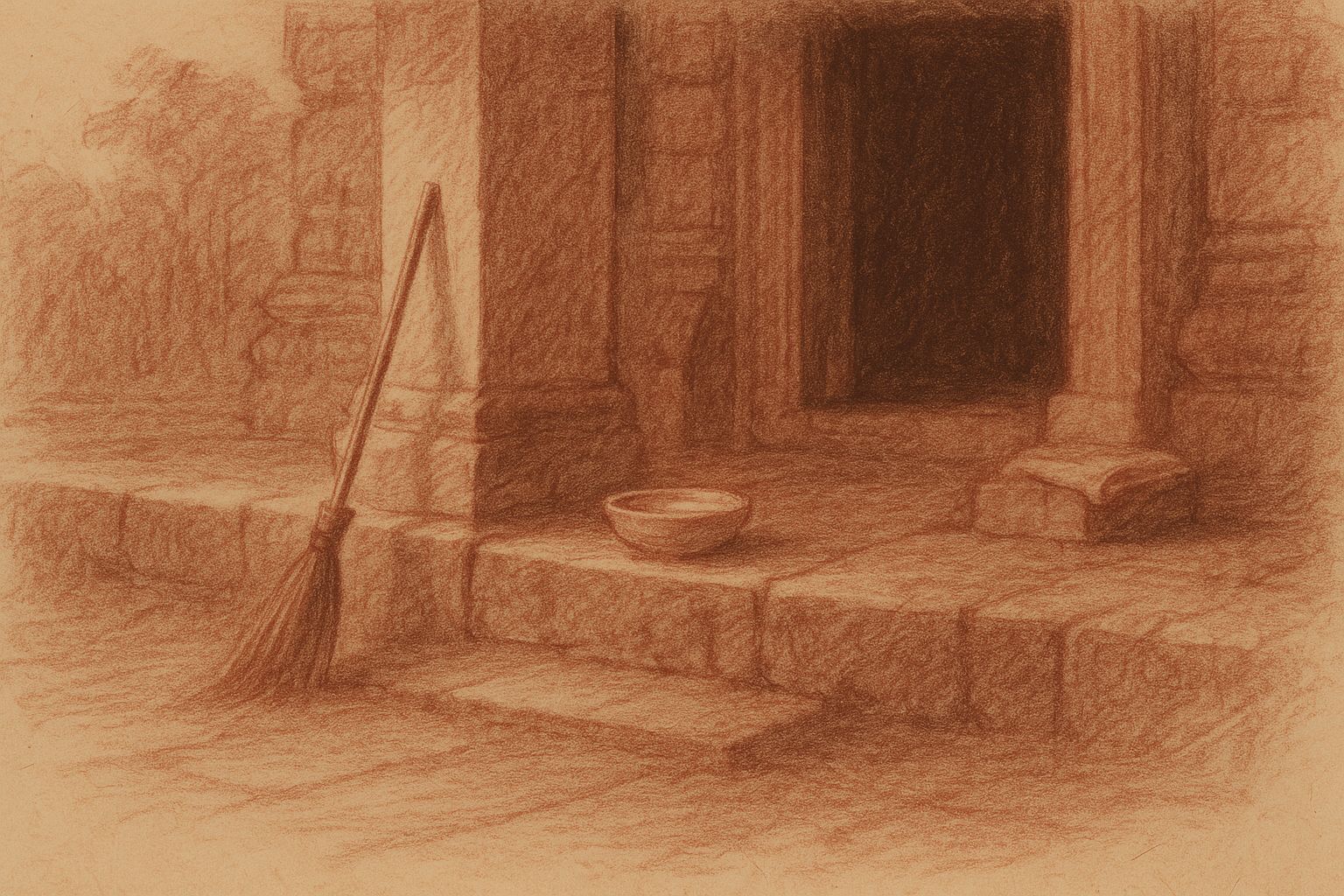
Those Who Keep the Way Open — On the Quiet Guardians of Angkor’s Thresholds
3 min read
Quiet gestures shape the way into Angkor — a swept stone, a refilled bowl, a hand steadying a guardian lion. This essay reflects on the unseen custodians whose daily care keeps the thresholds open, revealing how sacredness endures not through stone alone, but through those who tend its meaning.
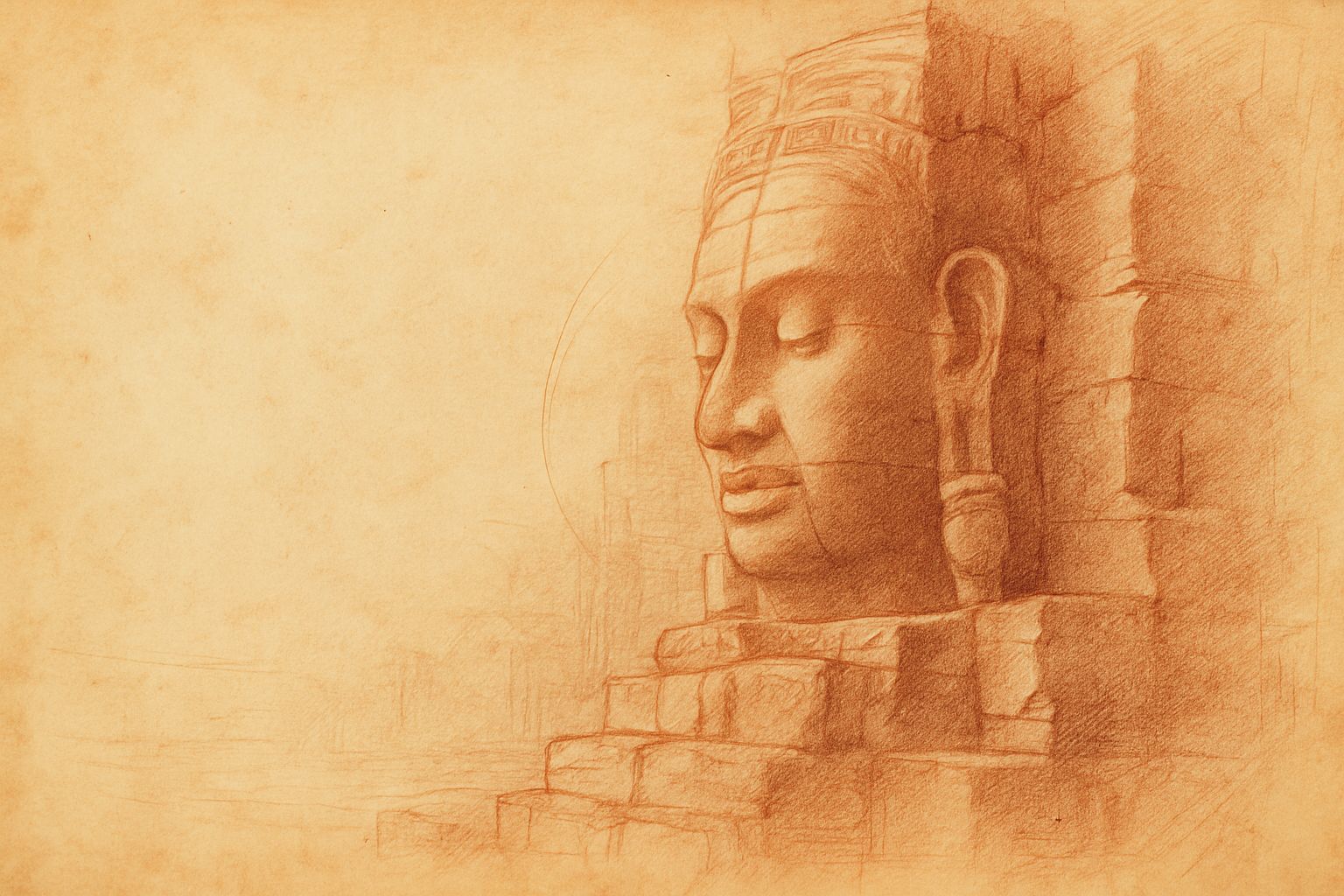
Multiplicity and Mercy — The Face Towers of Jayavarman VII
5 min read
A new vision of kingship rises at the Bayon: serene faces turned to every horizon, shaping a world where authority is expressed as care. Moving through the terraces, one enters a field of steady, compassionate presence — a landscape where stone, light, and time teach through quiet attention.
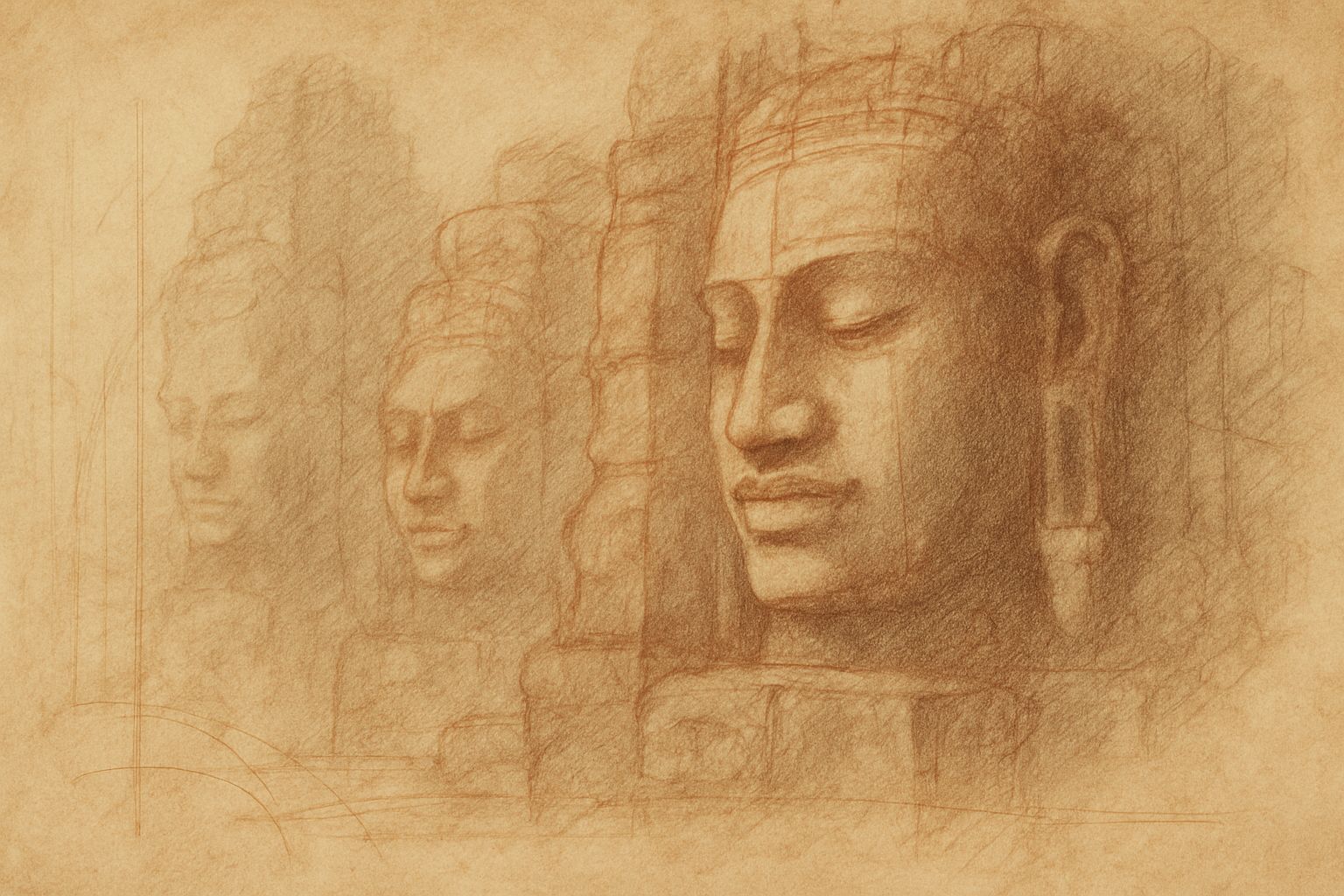
Stone That Dreams
4 min read
Bayon wakes like a mind emerging from shadow. Its many faces shift with light and breath, teaching that perception—and the self—is never singular. In walking this forest of towers, the pilgrim discovers a quiet multiplicity within, held together by a calm that feels both ancient and newly understood.
Join My Studio Journal
Receive occasional letters from my studio in Siem Reap—offering a glimpse into my creative process, early access to new fine art prints, field notes from the temples of Angkor, exhibition announcements, and reflections on beauty, impermanence, and the spirit of place.
No noise. No clutter. Just quiet inspiration, delivered gently.
Subscribe and stay connected to the unfolding story.
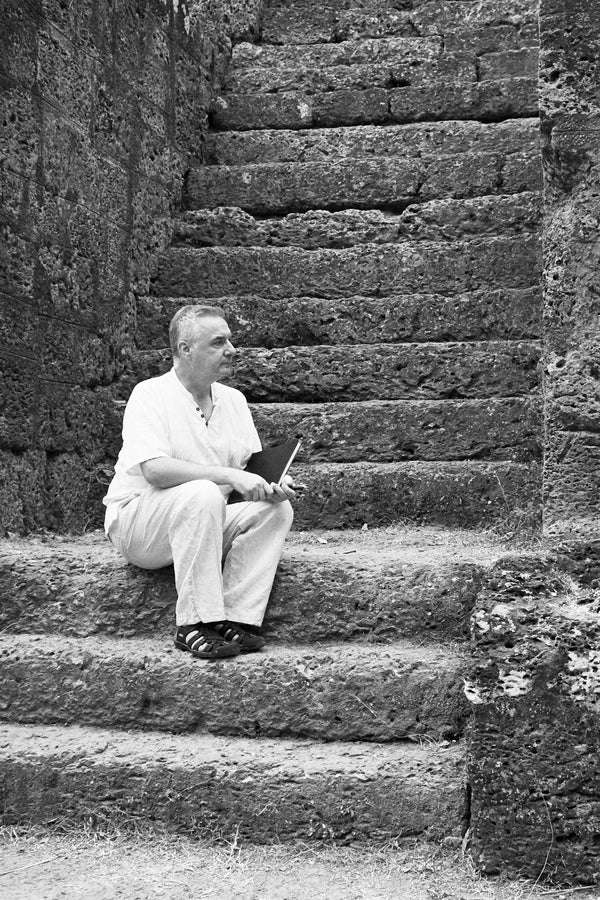
Join My Studio Journal
Receive occasional letters from my studio in Siem Reap—offering a glimpse into my creative process, early access to new fine art prints, field notes from the temples of Angkor, exhibition announcements, and reflections on beauty, impermanence, and the spirit of place.
No noise. No clutter. Just quiet inspiration, delivered gently.
Subscribe and stay connected to the unfolding story.
